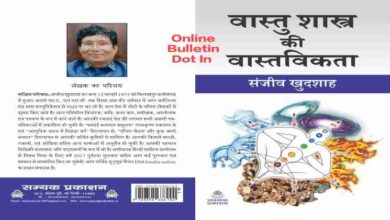ladakiyon ko ladakon se jyaada poshan mein sudhaar kee jarurat Girls need improvement in nutrition more than boys


©Priyanka Saurabh
Introduction- Hisar, Haryana.
Boys and girls are almost equally likely to be malnourished. For girls, the amount of nutrition is relatively low, both in terms of quality and quantity. The health of girls is also affected due to the additional burden from early and multiple pregnancies. Due to patriarchal society, boys are given relatively more nutritious food Because they are considered as the breadwinner of the family, especially if the family is poor and is not in a position to provide nutritious food to all the children. Poor nutritional status of women during the reproductive period is responsible for undernutrition of children.
According to several studies, adolescence is a nutritionally demanding phase of life. Although both teenage boys and girls face emotional changes during this period, girls face greater physical demands than boys and thus require greater intake of macro and micronutrients. There are many positive effects of improving women’s malnutrition because healthy women can fulfill their many roles – generating income, ensuring the nutrition of their families, and producing healthy children – and all function more effectively and thus To help advance the socioeconomic development of countries.
Women are often responsible for preparing and preparing food for the household, so their knowledge of nutrition or lack thereof can affect the health and nutritional status of the entire family. It is important to promote greater gender equality, including increasing women’s control over resources and their ability to make decisions. Improving women’s nutrition can help nations achieve the Three Millennium Development Goals, which are generally accepted as a framework for measuring development progress.
However, in society, women are traditionally discriminated against and excluded from political and family-related decisions. Despite supporting their families and their daily contributions, their opinions are rarely accepted, and their rights are limited. The society actually recognizes women’s rights, including political participation, family allowance and the right to set up businesses. Yet, in rural areas, poverty and lack of information represent real barriers to women’s freedom and empowerment.
Boys and girls are almost equally likely to be malnourished. For girls, the amount of nutrition is relatively low, both in terms of quality and quantity. The health of girls is also affected due to the additional burden from early and multiple pregnancies. Due to patriarchal society, boys are given relatively more nutritious food Because they are considered as the breadwinner of the family, especially if the family is poor and is not in a position to provide nutritious food to all the children. Poor nutritional status of women during the reproductive period is responsible for undernutrition of children.
The National Family Health Survey shows a 5% increase in anemia among adolescent girls. The Comprehensive National Nutrition Survey 2019 shows that even before the pandemic, consumption of diverse food groups was low among adolescents. The consequences of COVID-19 have worsened dietary diversity, especially among women, adolescents and children. According to a study by the Tata-Cornell Institute for Agriculture and Nutrition, the dietary diversity of women in India declined by 42% during the Covid-19 lockdown as they consumed fewer fruits, vegetables and eggs.
The lockdown led to a loss of mid-day meals and interrupted weekly iron folic acid supplementation and nutrition education in schools for adolescent girls. This was compounded by challenges in providing nutrition services to out-of-school adolescent girls, further increasing their vulnerability to poor nutritional outcomes. Adolescence is the window of opportunity where dietary diversity practices can be created to correct nutritional deficiencies and replenish the body with much-needed nutrients, especially for girls.
Currently, 80% of adolescents suffer from ‘hidden hunger’ due to micronutrient deficiencies. This deficiency is more in girls as they already suffer from multiple nutritional deficiencies. Initiatives need to be strengthened to address the deficiencies of not only iron and folic acid, but also vitamin B12, vitamin D and zinc. The NFHS findings are a reminder of the urgent need to close the gap in girls’ education and address the poor health status of women.
At present, making these services accessible, affordable and acceptable requires an integrated and coordinated effort from all health institutions, academia and other stakeholders directly or indirectly involved in health care services. With the inclusion of diverse dietary sources and nutritional counseling, government health and nutrition policies need to emphasize strong adherence to a varied diet and physical activity. This includes adding locally sourced fruits and vegetables, seasonal diet and millet.
To take this forward, strong nutritional counseling for adolescent girls through home visits by community workers, building a strong ecosystem in schools to promote healthy habits and diet, virtual counseling and community-based events and village health programmes. It needs to be supplemented by comprehensive nutritional counseling through the medium. As with all policies and interventions, it is equally important to ensure that girls remain in school or formal education, their safety is ensured and their health and nutrition are prioritized. Only then can such measures provide opportunities for girls to improve their nutritional and health outcomes.

लड़कियों को लड़कों से ज्यादा पोषण में सुधार की जरुरत

©प्रियंका सौरभ
परिचय- हिसार, हरियाणा.
लड़के और लड़कियों दोनों के कुपोषित होने की संभावना लगभग समान रूप से होती है। लड़कियों के लिए, पोषण की मात्रा गुणवत्ता और मात्रा दोनों के मामले में अपेक्षाकृत कम है। जल्दी और कई गर्भधारण से अतिरिक्त बोझ के कारण लड़कियों का स्वास्थ्य भी प्रभावित होता है। पितृसत्तात्मक समाज के कारण, लड़कों को अपेक्षाकृत अधिक पौष्टिक भोजन दिया जाता है क्योंकि उन्हें परिवार का कमाने वाला समझा जाता है, खासकर यदि परिवार गरीब है और सभी बच्चों को पौष्टिक भोजन उपलब्ध कराने की स्थिति में नहीं है। प्रजनन काल के दौरान महिलाओं की खराब पोषण स्थिति बच्चों के अल्प पोषण के लिए जिम्मेदार है।
कई अध्ययनों के अनुसार, किशोरावस्था जीवन का एक पोषण की मांग वाला चरण है। यद्यपि इस अवधि के दौरान किशोर लड़के और लड़कियों दोनों को भावनात्मक परिवर्तनों का सामना करना पड़ता है, लड़कियों को लड़कों की तुलना में अधिक शारीरिक मांगों का सामना करना पड़ता है और इस प्रकार मैक्रो और सूक्ष्म पोषक तत्वों के अधिक सेवन की आवश्यकता होती है। महिलाओं के कुपोषण को सुधारने के कई सकारात्मक प्रभाव हैं क्योंकि स्वस्थ महिलाएं अपनी कई भूमिकाओं को पूरा कर सकती हैं – आय पैदा करना, अपने परिवार का पोषण सुनिश्चित करना, और स्वस्थ बच्चे पैदा करना – और अधिक प्रभावी ढंग से सभी कार्य करना और इस तरह देशों के सामाजिक आर्थिक विकास को आगे बढ़ाने में मदद करना।
महिलाएं अक्सर घर के लिए भोजन बनाने और तैयार करने के लिए जिम्मेदार होती हैं, इसलिए पोषण के बारे में उनका ज्ञान या इसकी कमी पूरे परिवार के स्वास्थ्य और पोषण की स्थिति को प्रभावित कर सकता है। संसाधनों पर महिलाओं का नियंत्रण बढ़ाना और निर्णय लेने की उनकी क्षमता सहित अधिक से अधिक लैंगिक समानता को बढ़ावा देना महत्वपूर्ण है। महिलाओं के पोषण में सुधार से राष्ट्रों को तीन सहस्राब्दि विकास लक्ष्यों को प्राप्त करने में मदद मिल सकती है, जिन्हें आमतौर पर विकास प्रगति को मापने के लिए एक रूपरेखा के रूप में स्वीकार किया जाता है।
हालाँकि, समाज में, महिलाओं के साथ पारंपरिक रूप से भेदभाव किया जाता है और उन्हें राजनीतिक और परिवार से संबंधित निर्णयों से बाहर रखा जाता है। अपने परिवारों का समर्थन करने और उनके दैनिक योगदान के बावजूद, उनकी राय को शायद ही कभी स्वीकार किया जाता है, और उनके अधिकार सीमित हैं। समाज वास्तव में महिलाओं के अधिकारों को मान्यता देता है, जिसमें राजनीतिक भागीदारी, परिवार भत्ता और व्यवसाय स्थापित करने के अधिकार शामिल हैं। फिर भी, ग्रामीण क्षेत्रों में, गरीबी और जानकारी की कमी महिलाओं की स्वतंत्रता और सशक्तिकरण के लिए वास्तविक बाधाओं का प्रतिनिधित्व करती है।
लड़के और लड़कियों दोनों के कुपोषित होने की संभावना लगभग समान रूप से होती है। लड़कियों के लिए, पोषण की मात्रा गुणवत्ता और मात्रा दोनों के मामले में अपेक्षाकृत कम है। जल्दी और कई गर्भधारण से अतिरिक्त बोझ के कारण लड़कियों का स्वास्थ्य भी प्रभावित होता है। पितृसत्तात्मक समाज के कारण, लड़कों को अपेक्षाकृत अधिक पौष्टिक भोजन दिया जाता है क्योंकि उन्हें परिवार का कमाने वाला समझा जाता है, खासकर यदि परिवार गरीब है और सभी बच्चों को पौष्टिक भोजन उपलब्ध कराने की स्थिति में नहीं है। प्रजनन काल के दौरान महिलाओं की खराब पोषण स्थिति बच्चों के अल्प पोषण के लिए जिम्मेदार है।
राष्ट्रीय परिवार स्वास्थ्य सर्वेक्षण किशोर लड़कियों में एनीमिया में 5% की वृद्धि दर्शाता है। व्यापक राष्ट्रीय पोषण सर्वेक्षण 2019 से पता चलता है कि महामारी से पहले भी, किशोरों के बीच विविध खाद्य समूहों की खपत कम थी। कोविड -19 के नतीजों ने विशेष रूप से महिलाओं, किशोरों और बच्चों के बीच आहार विविधता को और खराब कर दिया है। टाटा-कॉर्नेल इंस्टीट्यूट फॉर एग्रीकल्चर एंड न्यूट्रिशन के एक अध्ययन के अनुसार, कोविड -19 लॉकडाउन के दौरान भारत में महिलाओं की आहार विविधता में 42% की गिरावट आई क्योंकि उन्होंने कम फल, सब्जियां और अंडे का सेवन किया।
लॉकडाउन के कारण मध्याह्न भोजन का नुकसान हुआ और किशोर लड़कियों के लिए स्कूलों में साप्ताहिक आयरन फोलिक एसिड सप्लीमेंट और पोषण शिक्षा में रुकावट आई। यह स्कूल न जाने वाली किशोरियों को पोषण सेवाएं प्रदान करने में चुनौतियों से जटिल हो गया, जिससे खराब पोषण परिणामों के प्रति उनकी संवेदनशीलता और बढ़ गई। किशोरावस्था अवसर की खिड़की है जहां पोषण संबंधी कमियों को ठीक करने के लिए आहार विविधता की प्रथाओं का निर्माण किया जा सकता है और विशेष रूप से लड़कियों के लिए बहुत आवश्यक पोषक तत्वों के साथ शरीर को फिर से भरने के लिए बनाया जा सकता है।
वर्तमान में, 80% किशोर सूक्ष्म पोषक तत्वों की कमी के कारण ‘छिपी हुई भूख’ से पीड़ित हैं। लड़कियों में यह कमी अधिक है क्योंकि वे पहले से ही कई पोषण अभावों से पीड़ित हैं। न केवल आयरन और फोलिक एसिड, बल्कि विटामिन बी 12, विटामिन डी और जिंक की कमी को दूर करने के लिए पहल को मजबूत करने की आवश्यकता है। एनएफएचएस के निष्कर्ष लड़कियों की शिक्षा में अंतराल को बंद करने और महिलाओं की खराब स्वास्थ्य स्थिति को दूर करने की तत्काल आवश्यकता की याद दिलाते हैं।
वर्तमान समय में इन सेवाओं को सुलभ, वहनीय और स्वीकार्य बनाने के लिए स्वास्थ्य देखभाल सेवाओं से प्रत्यक्ष या अप्रत्यक्ष रूप से जुड़े सभी स्वास्थ्य संस्थानों, शिक्षाविदों और अन्य भागीदारों से एकीकृत और समन्वित प्रयासों की आवश्यकता है। विविध आहार स्रोतों और पोषण परामर्श को शामिल के साथ, सरकार की स्वास्थ्य और पोषण नीतियों को विविध आहार और शारीरिक गतिविधियों के मजबूत अनुपालन पर जोर देने की आवश्यकता है। इसमें स्थानीय रूप से खट्टे फल और सब्जियां, मौसमी आहार और बाजरा शामिल करना शामिल है।
इसे आगे बढ़ाने के लिए सामुदायिक कार्यकर्ताओं के घर के दौरे के माध्यम से किशोर लड़कियों के लिए मजबूत पोषण परामर्श, स्वस्थ आदतों और आहार को बढ़ावा देने के लिए स्कूलों में एक मजबूत पारिस्थितिकी तंत्र का निर्माण, आभासी परामर्श और समुदाय आधारित घटनाओं और ग्राम स्वास्थ्य के माध्यम से व्यापक पोषण परामर्श द्वारा पूरक होने की आवश्यकता है। सभी नीतियों और हस्तक्षेपों के साथ, यह सुनिश्चित करना भी उतना ही महत्वपूर्ण है कि लड़कियां स्कूल या औपचारिक शिक्षा में रहें, उनकी सुरक्षा सुनिश्चित हो और उनके स्वास्थ्य और पोषण को प्राथमिकता दी जाए। तभी इस तरह के उपाय लड़कियों को उनके पोषण और स्वास्थ्य परिणामों में सुधार के अवसर प्रदान कर सकते हैं।














